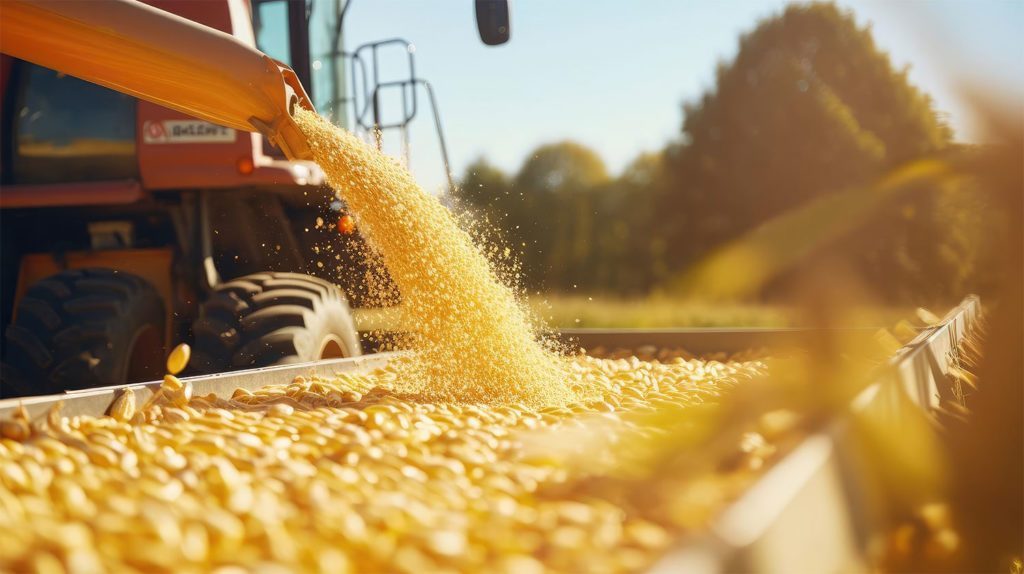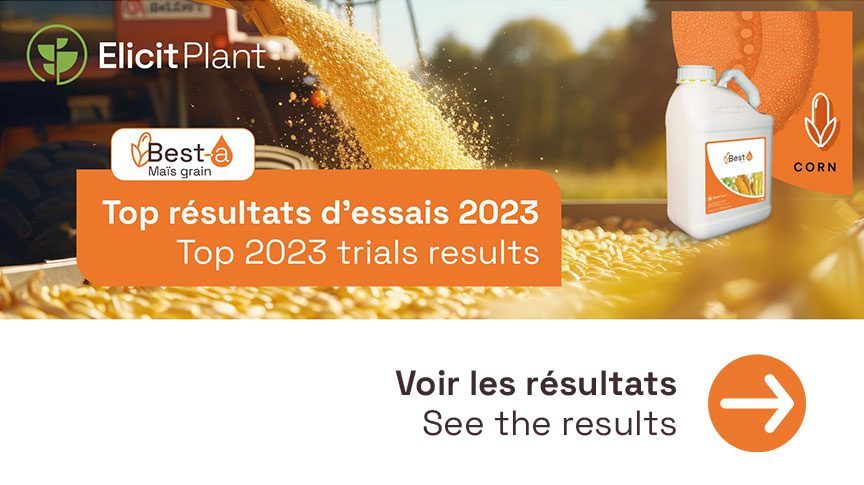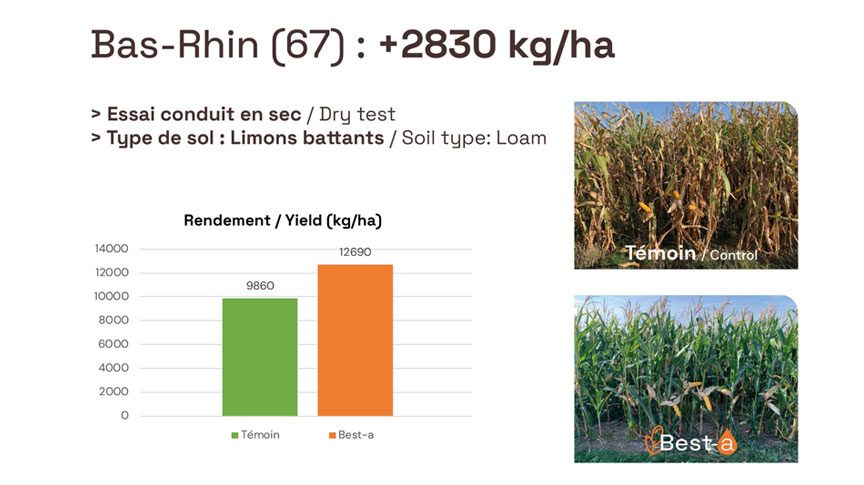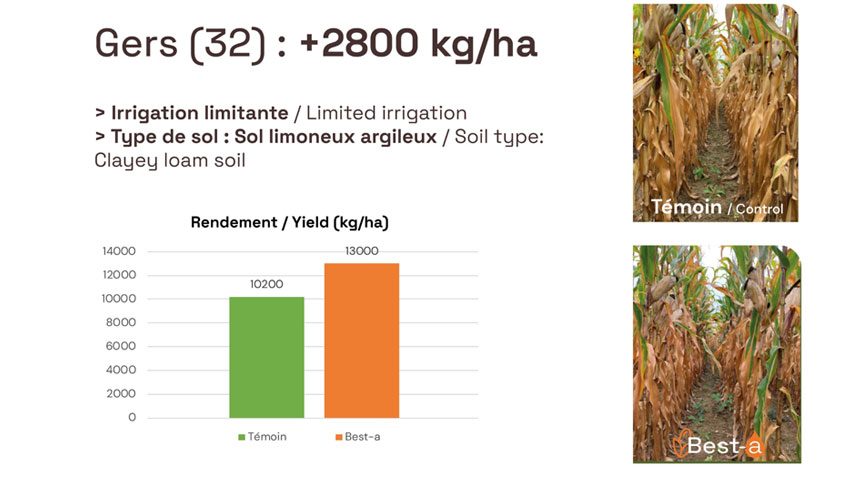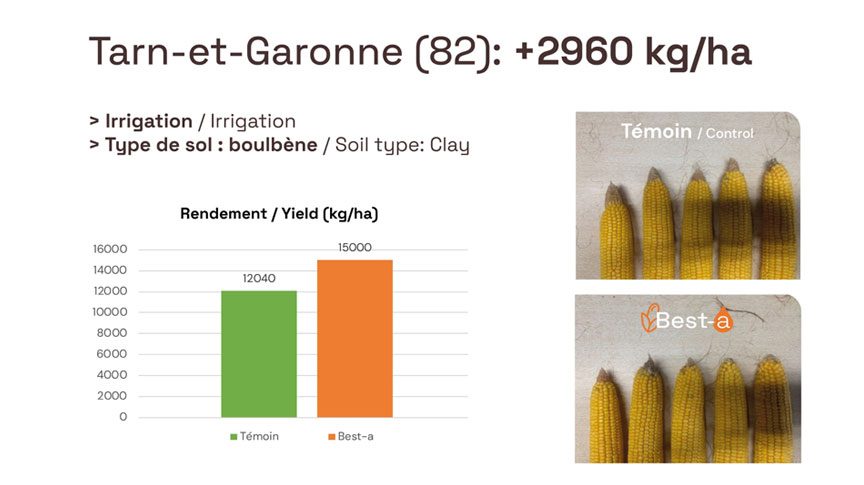Once the corn was harvested in 2023, our data team set about compiling and analyzing the data collected with our partners. We are pleased to share the initial results with you in full transparency.
2023: a year of seemingly mild weather
Compared with 2022, a year marked by historic drought, the weather in 2023 seems to have been more clement, with mild temperatures and rainfall favoring corn growth. Nevertheless, corn growers who used Best-a fared better, proving that even in the absence of prolonged drought, crops were exposed to short episodes of stress that impacted yields.
Different years, consistent results
Best-a’s performance remained consistent despite years with very different weather conditions. For corn kernels, the average annual and overall results recorded in the 97 trials conducted in Brazil, the United States, Ukraine and France between 2019 and 2022 showed an average of 570 kg per hectare. The first 49 results from the 2023 trials confirm these findings, with initial yield gains estimated to be an average of 590 kg per hectare, representing significant economic gains for farmers. Results from one year to the next are consistent despite the different weather and soil conditions, and varying geographical areas. Whether in the Ukraine, Poland, Brazil or France, the results obtained remain constant and coherent with the product’s mode of action and expected performance levels.
Some growers even achieved exceptional gains, such as Volodymy Yakovenko in Ukraine and Patrick Mounier in the Charente region of France, who attained yield increases of 900 kg and 1,000 kg per hectare respectively.
Check out their testimonials here.
Excellent results were also reported in France in the regions of Bas-Rhin, Gers and Tarn-et-Garonne, with yield increases of 2830 kg, 2800 kg and 2960 kg per hectare. Here again, Best-a has proven its performance in diverse weather conditions and soil contexts.


